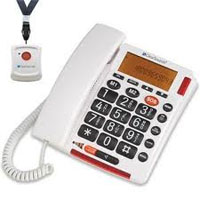How Call Answering Works
Learning how call answering works is a key step in determining whether such a service is right for you and your business. There are two types of call answering services that you’ll need to understand: automated services and manual. By manual, we mean that your incoming calls are answered by a live operator rather than an automated system. Let’s go over these two services in detail.
How Call Answering Works: Automated Systems
First, we’ll learn how call answering works the automated way. We won’t go into great detail about how exactly the software does what it does, but we’ll get a complete picture of what happens to a call when it is answered by one of these systems. Systems that answer calls using voice prompts and allow the user to select from a variety of options are called interactive voice response systems, or IVRS. IVRs can be small and relatively simple or large and complex.
In a simple IVRS, the caller is typically presented with a list of extensions to which the call can be forwarded. They simply enter the extension number, and the call is routed to that extension. If that extension is not answered, or the person at that extension has programmed the system to do so, the call is routed to a voicemail box. These systems are typically used by small businesses. Some of these systems also allow the administrator to set a menu option that provides the caller with information such as business hours and directions, but this is usually the extent of the capabilities of small systems. How call answering works on a larger system is similar, but, as you would expect, a bit more complicated.
Large IVRS answer calls just as smaller ones, but the caller and administrator have many more options from which to choose. The menus on larger systems can extend for multiple levels. For instance, the sales menu can have a submenu beneath it which directs the caller to a particular sales department, like TVs or car audio.
The method of input is sometimes different on a complex IVRS. How call answering works on these system is sometimes by voice input on behalf of the caller. Instead of pushing 1 for sales, the caller would just say, “sales,” and the call would be routed appropriately.
Output can also be different as well. Some systems allow for text-to-speech output, which enables callers to retrieve any kind of information available on the web. This might include sports scores, the latest weather conditions, timely announcements regarding the business and more.
How Call Answering Works: Manual Services
How call answering works with a Manual service is quite simple on its face. Your incoming calls are routed to some location, which could be anywhere in the world, where they are answered by a live operator. This operator can then choose what to do based on a system the two of you have devised.
The operator can either route the call to your current location or cell phone, or they can take a message. If they take a message, you can choose in what manner it is delivered to you and when. Methods can be as simple as reading the messages to you over the phone, or something more complex such as transcribing each messages and faxing or emailing them to you.
Manual call answering services can do much more than take messages. They can also schedule appointments for you and remind you of upcoming commitments. In addition, you can control at which times calls are forwarded to you and who can communicate with you at a given time.

